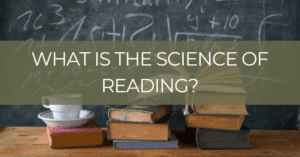Reading is one of the most critical academic skills — and yet, for many students, it doesn’t come naturally. The Science of Reading is a growing body of research that explains how children learn to read and what instructional methods work best.
Whether you’re a parent, teacher, or school leader, understanding the Science of Reading can help you support stronger literacy outcomes at every stage.
What Is the Science of Reading?
The Science of Reading refers to decades of interdisciplinary research from psychology, neuroscience, linguistics, and education. This research explores how the brain learns to read, and it has led to clear, evidence-based practices for teaching reading more effectively.
At its core, reading involves translating written symbols into spoken language and meaning. But that seemingly simple task engages multiple areas of the brain and relies on several key processes.
The Core Cognitive Processes Behind Reading
🔤 1. Phonological Awareness
Phonological awareness — the ability to recognize and manipulate the sounds in spoken language — is one of the strongest predictors of early reading success. Students must understand that words are made up of individual sounds (phonemes) before they can decode unfamiliar words.
Without strong phonemic awareness, students often struggle with sounding out words, spelling, and building reading fluency.
👁️ 2. Visual Processing
Reading also depends on the brain’s ability to recognize letters, word patterns, and overall text structure. Skilled readers process visual information quickly and can automatically identify common word shapes and spelling patterns. This frees up mental energy for comprehension.
📖 3. Decoding and Word Recognition
Decoding is the ability to sound out unfamiliar words using knowledge of phonics. When decoding becomes automatic, students shift toward word recognition, allowing them to read with greater speed and accuracy — a key to developing reading fluency.
🧠 4. Language Comprehension
True reading success requires more than decoding. Students must also understand vocabulary, sentence structure, and overall meaning. This involves background knowledge, reasoning, and inference — all of which support deeper comprehension.
What Does the Brain Do When We Read?
Reading activates multiple neural pathways, primarily in the left hemisphere of the brain. Regions like the visual cortex, angular gyrus, and Broca’s and Wernicke’s areas work together to translate written language into meaning.
For struggling readers, these neural pathways often develop differently or inefficiently — which is why structured, explicit instruction is so critical.
Why the Science of Reading Matters in Today’s Classrooms
Many schools still use outdated or inconsistent reading methods that don’t align with the Science of Reading. Balanced literacy approaches, for example, often overemphasize guessing strategies or context clues instead of teaching foundational skills like phonics and decoding.
That’s why more educators and school systems are shifting toward structured literacy — a teaching approach rooted in the Science of Reading. Structured literacy explicitly teaches the building blocks of reading in a clear, sequential, and cumulative way.
Supporting Students Through Evidence-Based Reading Instruction
At Thrive Tutoring, we incorporate the Science of Reading into our work with students who are:
-
Just learning to read
-
Struggling with decoding or fluency
-
Diagnosed with dyslexia or other reading differences
-
Needing explicit support in phonics, spelling, and comprehension
Our team of expert reading tutors uses research-backed methods to help students build strong reading foundations — one sound, syllable, and sentence at a time.
Final Thought
Reading isn’t something kids “just pick up.” It’s a complex, learned skill — and the Science of Reading helps us understand exactly how to teach it.
By embracing this research and using it to guide instruction, we can close reading gaps earlier, support struggling readers more effectively, and give every child the opportunity to become a confident, lifelong reader.
👉 Contact us to learn more about structured literacy tutoring and early reading support.





